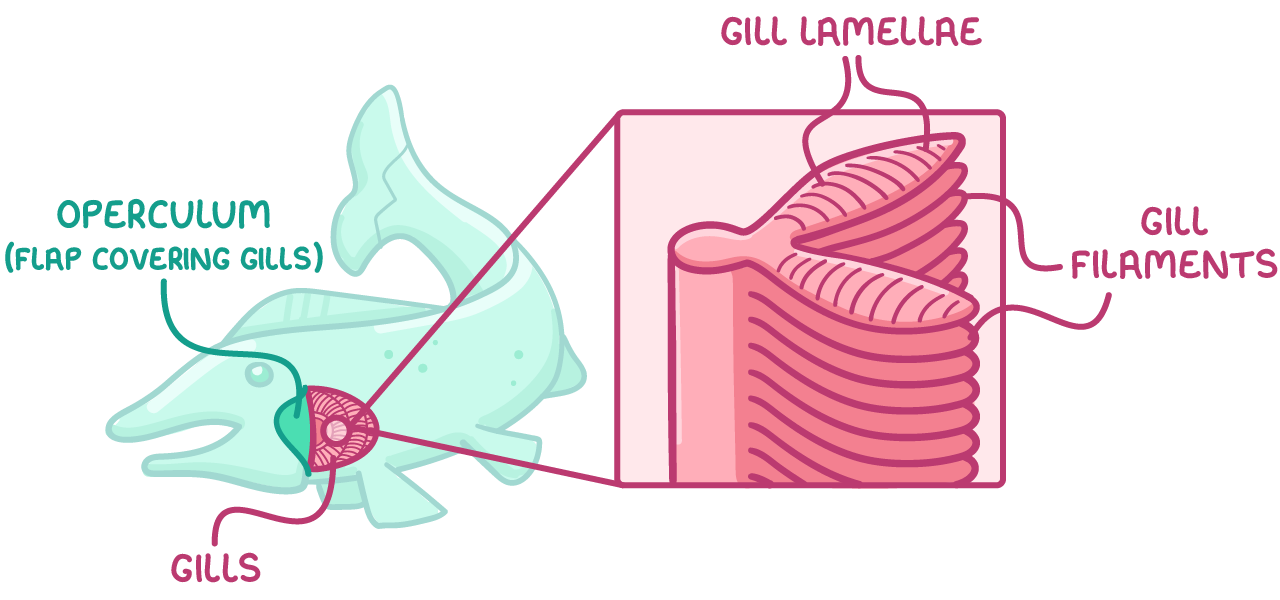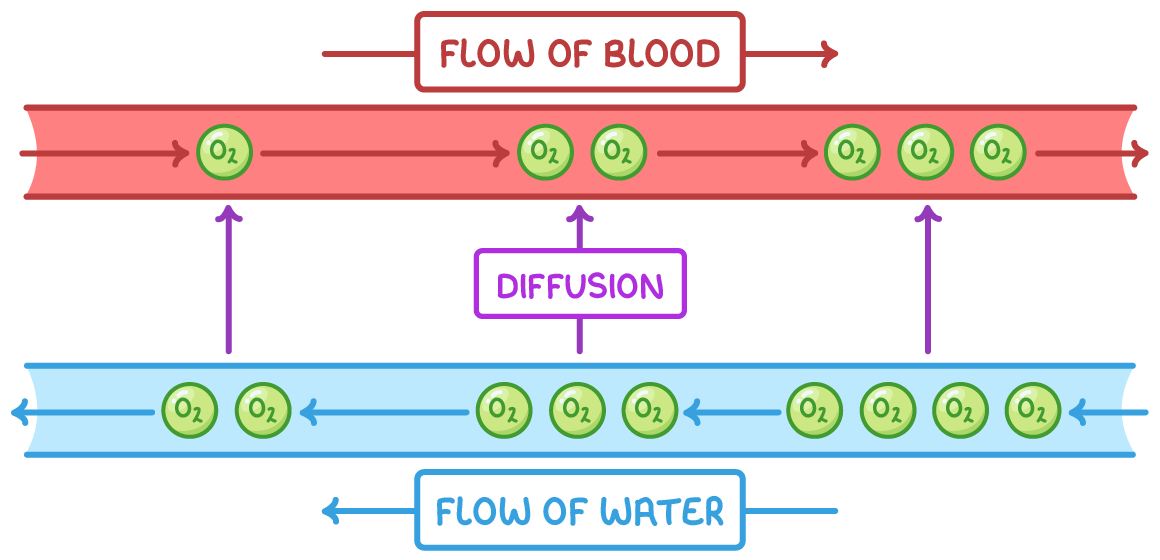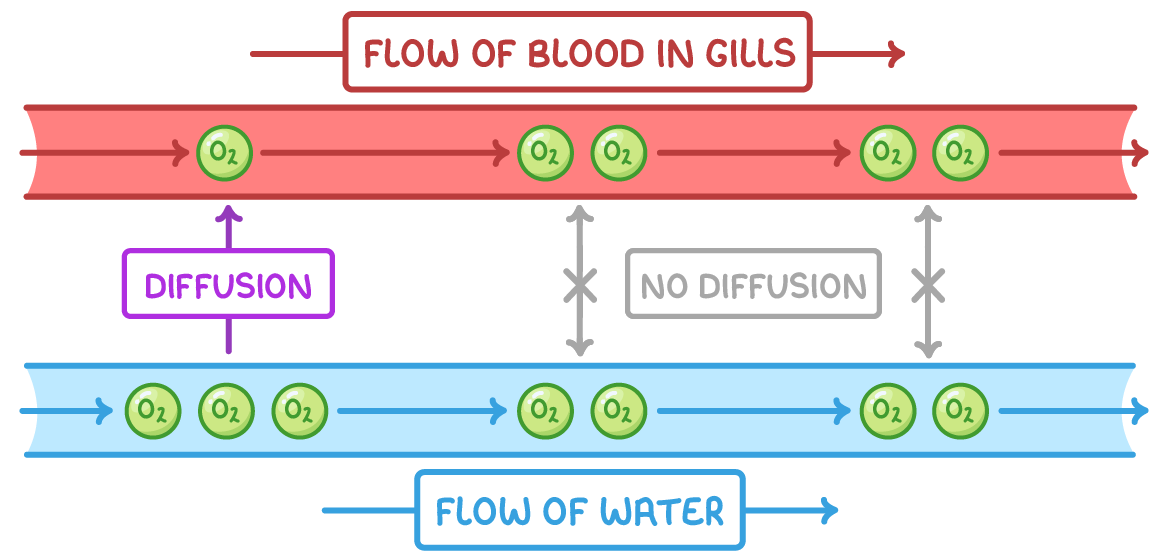Gas Exchange in Fish
This lesson covers:
- The challenges bony fish face in extracting oxygen from water
- The structure and function of fish gills for gas exchange
- The countercurrent exchange system in fish gills
- How changes in the volume of the buccal cavity ventilate the gills
Respiratory systems in bony fish
Large, active, bony fish have high oxygen needs. These needs exceed simple diffusion across the body surface, which is also covered with scaly skin preventing gas exchange.
Bony fish have evolved specialised respiratory systems to meet the challenges of extracting oxygen from water.
Some of these challenges include:
- Water is denser and more viscous than air, resulting in slower diffusion of oxygen.
- Water has less oxygen than air.
- Bony fish are very active so have high oxygen demands.
Structure of the gas exchange system in bony fish Gills allow bony fish to efficiently take up oxygen from water and to remove carbon dioxide. |
 Structure of the gills:
|
Adaptations of the gills for efficient gas exchange:
|
Countercurrent exchange principle The gills of bony fish allow countercurrent flow of blood and water, which is much more efficient than a parallel flow. |
Countercurrent flow  In a countercurrent flow system:
Parallel flow The diagram below shows how diffusion would occur in a parallel flow system. |
 |
Countercurrent exchange systems enable more efficient gas transfer than parallel flow, because parallel flow reduces the concentration gradient so less oxygen can be absorbed. |
Ventilation via the buccal cavity The buccal cavity is the mouth and throat area of bony fish. Bony fish ventilate their gills by opening and closing their mouths, changing the volume of the buccal cavity:
This drives unidirectional water flow for ventilation, providing freshly oxygenated water and removing carbon dioxide. |